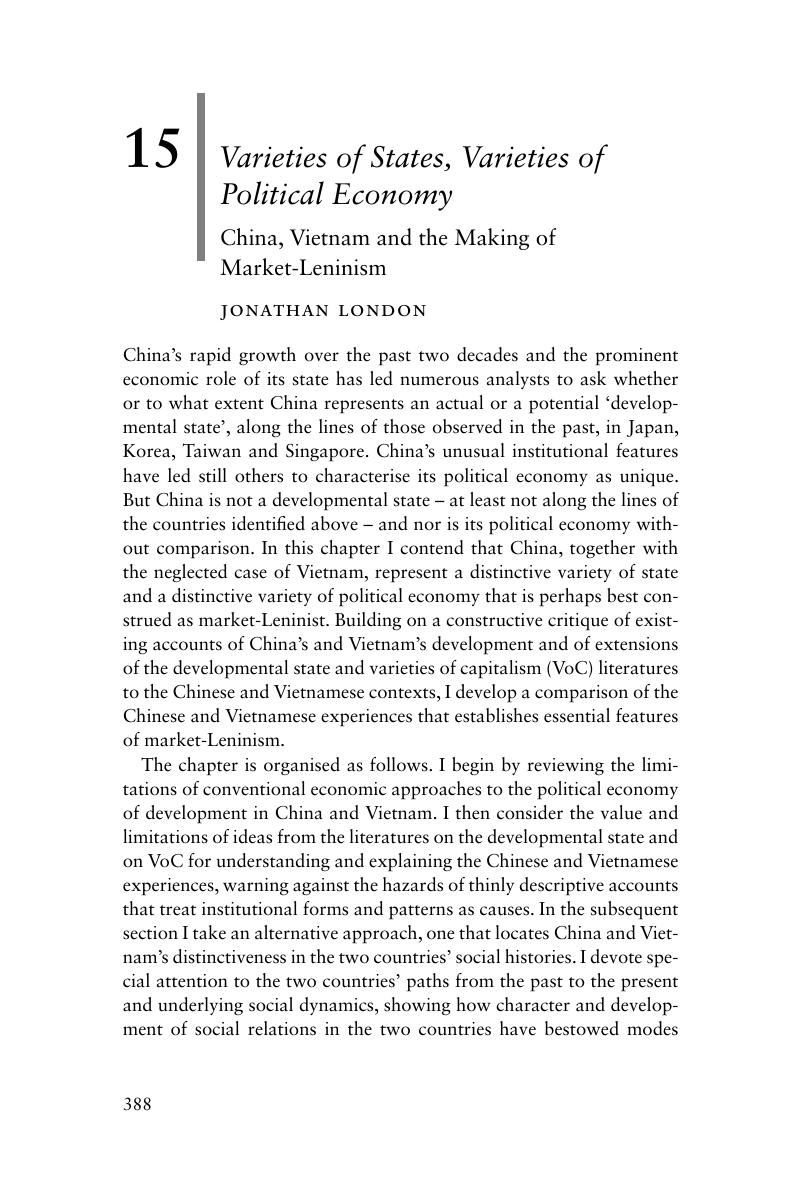Book contents
- Asia after the Developmental State
- Cambridge Studies in Comparative Public Policy
- Asia after the Developmental State
- Copyright page
- Dedication
- Contents
- Tables and Figures
- List of Contributors
- Preface
- Abbreviations
- Acknowledgements
- Introduction
- Part I Conceptualising State Transformation in Asia
- Part II Cases of State Transformation in Contemporary Asia
- 8 The State and Development in Malaysia
- 9 Survival of the Weakest?
- 10 The Pandora's Box of Neoliberalism
- 11 Healthcare and the State in China
- 12 Wither the Developmental State?
- 13 Public–Private Partnerships in the Water Sector in South East Asia
- 14 Higher Education and the Developmental State
- 15 Varieties of States, Varieties of Political Economy
- 16 Modifying Recipes
- Index
- References
15 - Varieties of States, Varieties of Political Economy
China, Vietnam and the Making of Market-Leninism
from Part II - Cases of State Transformation in Contemporary Asia
Published online by Cambridge University Press: 06 October 2017
- Asia after the Developmental State
- Cambridge Studies in Comparative Public Policy
- Asia after the Developmental State
- Copyright page
- Dedication
- Contents
- Tables and Figures
- List of Contributors
- Preface
- Abbreviations
- Acknowledgements
- Introduction
- Part I Conceptualising State Transformation in Asia
- Part II Cases of State Transformation in Contemporary Asia
- 8 The State and Development in Malaysia
- 9 Survival of the Weakest?
- 10 The Pandora's Box of Neoliberalism
- 11 Healthcare and the State in China
- 12 Wither the Developmental State?
- 13 Public–Private Partnerships in the Water Sector in South East Asia
- 14 Higher Education and the Developmental State
- 15 Varieties of States, Varieties of Political Economy
- 16 Modifying Recipes
- Index
- References
Summary

- Type
- Chapter
- Information
- Asia after the Developmental StateDisembedding Autonomy, pp. 388 - 428Publisher: Cambridge University PressPrint publication year: 2017

